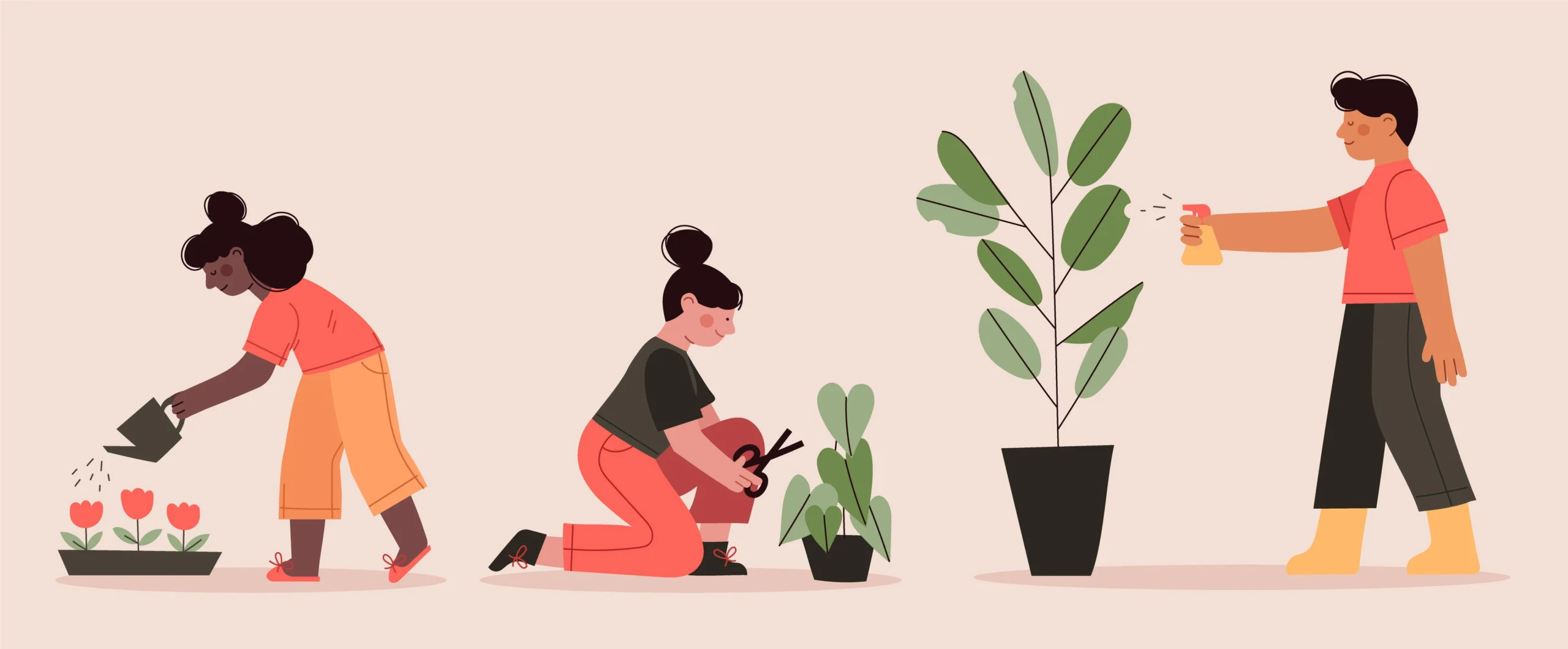Introduction
Plants are vital to life on Earth, providing oxygen, food, and habitat for countless species. Understanding how plants grow is essential for agriculture, gardening, and appreciating the natural world. This article explores the fascinating process of plant growth, from seed germination to full maturity. We’ll delve into the various stages of growth, the factors influencing plant development, and the intricate mechanisms that drive their life cycle.
The Basics of Plant Growth
What is Plant Growth?
Plant growth refers to the process by which plants increase in size and develop new tissues. This involves a combination of cell division, elongation, and differentiation, leading to the formation of roots, stems, leaves, and flowers. Growth is a continuous process that occurs throughout a plant’s life.
The Role of Photosynthesis
Photosynthesis is a critical process for plant growth. Plants use sunlight to convert carbon dioxide and water into glucose and oxygen. This glucose serves as a primary energy source for growth and development, while oxygen is released into the atmosphere.
Stages of Plant Growth
H3: Seed Germination
Seed germination is the initial stage of plant growth. It begins when a seed absorbs water, causing it to swell and break through its outer shell. This process activates enzymes that trigger the growth of the embryo within the seed. The radicle (root) emerges first, followed by the shoot (stem), which eventually grows above the soil surface.
Seedling Stage
Once the seedling emerges, it begins to develop its first true leaves and establish a more extensive root system. During this stage, the plant focuses on building its structure and expanding its foliage to maximize photosynthesis. Proper light, water, and nutrients are crucial for healthy seedling development.
Vegetative Growth
During the vegetative growth phase, the plant rapidly increases in size. It produces additional leaves, stems, and roots, allowing it to capture more sunlight and nutrients. This phase is characterized by vigorous growth and the development of the plant’s overall structure.
Reproductive Stage
The reproductive stage involves the development of flowers, fruits, and seeds. In flowering plants, this stage begins with the formation of flower buds, which eventually bloom into flowers. Pollination and fertilization occur, leading to the production of seeds and fruits that ensure the continuation of the plant species.
Maturity and Senescence
As the plant reaches maturity, it enters the senescence phase, where growth slows and aging processes begin. Leaves may yellow and fall off, and the plant focuses on seed production. Senescence is a natural part of the plant life cycle and prepares the plant for the next generation.
Factors Affecting Plant Growth
Light
Light is essential for photosynthesis, and the quality, duration, and intensity of light can influence plant growth. Different plants have varying light requirements, and inadequate or excessive light can impact their health and development.
Water
Water is a fundamental component of plant growth. It is involved in nutrient transport, photosynthesis, and maintaining cell turgor pressure. Both overwatering and underwatering can harm plants, so it is important to provide the right amount of water based on the plant’s needs and environmental conditions.
Soil and Nutrients
Soil provides plants with essential nutrients, including nitrogen, phosphorus, and potassium. The composition and quality of soil affect plant health and growth. Proper soil preparation and fertilization are crucial for supplying the necessary nutrients for optimal development.
Temperature
Temperature influences plant growth rates and development. Most plants have specific temperature ranges within which they thrive. Extreme temperatures, whether too hot or too cold, can stress plants and affect their growth negatively.
Air and Carbon Dioxide
Plants require carbon dioxide for photosynthesis. Adequate air circulation ensures that plants receive enough carbon dioxide and can release oxygen effectively. Poor air circulation can lead to reduced growth and increased susceptibility to disease.
Plant Growth Mechanisms
Cell Division and Elongation
Cell division and elongation are fundamental processes in plant growth. Cells divide to increase the number of cells in the plant, while elongation allows cells to expand and contribute to the plant’s overall size. These processes occur primarily in the meristems, specialized growth regions in plants.
Hormones and Growth Regulators
Plant hormones, such as auxins, gibberellins, and cytokinins, play a crucial role in regulating growth and development. These hormones influence processes such as cell division, elongation, and differentiation, helping plants adapt to environmental changes and internal needs.
Tropisms and Nastic Movements
Plants exhibit tropisms and nastic movements in response to environmental stimuli. Tropisms are growth responses toward or away from stimuli, such as light (phototropism) or gravity (gravitropism). Nastic movements are non-directional responses to stimuli, such as opening and closing of flowers (nyctinasty) or leaf movements (thigmonasty).
Practical Applications and Benefits
Agriculture and Horticulture
Understanding plant growth is essential for successful agriculture and horticulture. Knowledge of growth stages, nutrient requirements, and environmental conditions helps farmers and gardeners optimize plant health and yield.
Environmental Impact
Healthy plant growth contributes to environmental sustainability. Plants play a vital role in maintaining ecological balance, improving air quality, and preventing soil erosion. By fostering healthy plant growth, we support a healthier planet.
Plant-Based Innovations
Research into plant growth and development has led to innovations in biotechnology, such as genetically modified crops and advanced breeding techniques. These innovations aim to enhance crop resilience, productivity, and nutritional value.
Conclusion
The process of how plants grow is a complex and fascinating interplay of biological, environmental, and chemical factors. From the initial seed germination to full maturity, understanding plant growth involves appreciating the various stages of development, the influence of environmental factors, and the mechanisms that drive growth.
By gaining insight into these processes, we can better appreciate the role plants play in our world and make informed decisions in agriculture, gardening, and environmental conservation. As we continue to explore and understand plant growth, we unlock new opportunities for improving plant health, productivity, and sustainability.

